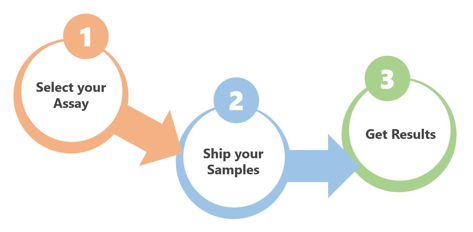Introduction
IL-17 is secreted by CD4+T cells, and can induce epithelial cells, endothelial cells, and fibroblasts to synthesize and secrete IL-6, IL-8, G-CSF, and PGE2, and promote the expression of ICAM-1. These molecules have different functions in different stages of hematopoiesis, inflammation, and immunity. The interleukin 17 family contains six member ligands (IL-17A ~ IL-17F) and five receptors (IL-17RA ~ IL-17RD and SEF). IL-17 is an inflammatory cytokine produced primarily by activated T cells. Among them, IL-17A has strong inflammatory properties, it can promote the local production of chemokines and stimulate the production of IL-6 and PGE-2.Besides, it can also enhance local inflammation and induce intercellular adhesion molecules on the cell surface (intercellular adhesion molecules, ICAM), which drives the response of T cells. IL-17E also has strong pro-inflammatory effects in vitro and in vivo. Other new members of the IL-17 family have distinctly different expression forms, and therefore may have different biological effects.
Mechanism and Function
IL-17 achieves its own biological effects through signal transduction. Among them, the IL-17RA and IL-17RC complexes mediate the response of cells to IL-17A and IL-17F. The complex of IL-17RA and IL-17RB mediates the response of cells to IL-17E / IL-25. First, the IL-17 receptor recruits Act1 as an adaptor for downstream signaling. Transcription factor NF-κB activator 1 (Act1) is a bridge molecule between IL-17RA and TNF receptor-related factor 6 (TRAF6). Later, TRAF6 also became a medium for IL-17A to activate NF-κB and JNK. Finally, activation NF-κB, activates the expression of certain specific genes. But in fact, no matter from the signal level, promoter activity, and transcription level of the IL-17 target gene, IL-17A's ability to activate NF-κB alone is very weak. Although IL-17 can only weakly activate downstream signals and gene expression, it can regulate mRNA stability and cooperate with other cytokines, thereby amplifying the response of target cells to IL-17.
In addition to the TRAF6 / NF-κB pathway, IL-17 is also involved in the MAPK pathway. IL-17A activates all three members of MAPKs (mitogen-activated protein kinases), namely extracellular signal-regulated kinases (ERK1 and ERK2) p44 and p42, Jun protein N-terminal kinase (JNK), and p38.In human mononuclear leukemia cell line U937, IL-17A induces tyrosine phosphorylation of Janus kinase (JAN) and certain members of the signal transduction and transcriptional activator protein (STAT) pathway, including Tyk2, JAK1, 2 And 3, STAT1, 2, 3 and 4, JA K / STAT pathway.As far as the function of IL-17 is concerned, on the one hand, it can play a key role in protecting the host from infection, on the other hand, it also helps to treat tumors. In addition, it also has a role in mediating the balance between infection and autoimmunity.
 Fig 1. Mechanism of Signaling
Fig 1. Mechanism of Signaling
Creative Proteomics can provide cytokine detection platform for scientific research. According to different purposes, our dedicated analysts will customize exclusive solutions for you. We aim to provide customers with high-quality and convenient services to help you accelerate the progress of your project.
Our cytokine detection service includes but is not limited to:
- Quantitative and qualitative detection of cytokines in different species
- Quantitative and qualitative detection of cytokine antibodies
- Quantitative and qualitative detection of single/mulltiple cytokines
Sample requirements
- Sample Types-Blood, serum, plasma, cerebrospinal fluid, cell culture supernatant, tissue homogenate, cell culture medium, urine, tumor, etc.
- Sample Volume - It is optimal for at least 200µl of each sample. This volume allows for triplicate testing of each sample.
Our advantages:
- Efficient design: Multiplex reaction detecting in various methods are available, which can be selected according to different samples and requirements.
- Sensitive detection: High-quality antibodies are used in the detection process to improve detection specificity and accuracy.
- Reliable results: The feedback results are professional and efficient.
Technology platform:
We mainly provide the Luminex cytokine detection platform. Luminex uses fluorescently encoded microspheres with specific antibodies to different target molecules. The different microspheres can be combined freely to a certain extent so that up to 100 analytes can be tested multiple times simultaneously in a single experiment.
The Luminex cytokine assay platform has the following advantages:
- Multiple detection: simultaneous detection of 100 biological targets
- Short experiment time: 1-3 weeks
- High sensitivity: the lower limit of accurate quantification is as low as 0.1 pg/mL
- Save samples: only need a sample volume as low as 25 μL
- Time saving: the experiment process only takes 4 hours
For your different needs, we can also provide the following detection methods:
- Enzyme-linked immunosorbent assay (ELISA)
- Flow cytometry
Workflow

For more information about the IL-17 detection service or need other detection requirements, please contact us.
References:
- Yao Z , Painter S L , et al. Human IL-17: A novel cytokine derived from T cells. The Journal of Immunology, 1996, 155(12):5483-5486.
- Moseley T A , Haudenschild D R, et al. Interleukin-17 family and IL-17 receptors. Cytokine & Growth Factor Reviews, 2003, 14(2):155-174.

